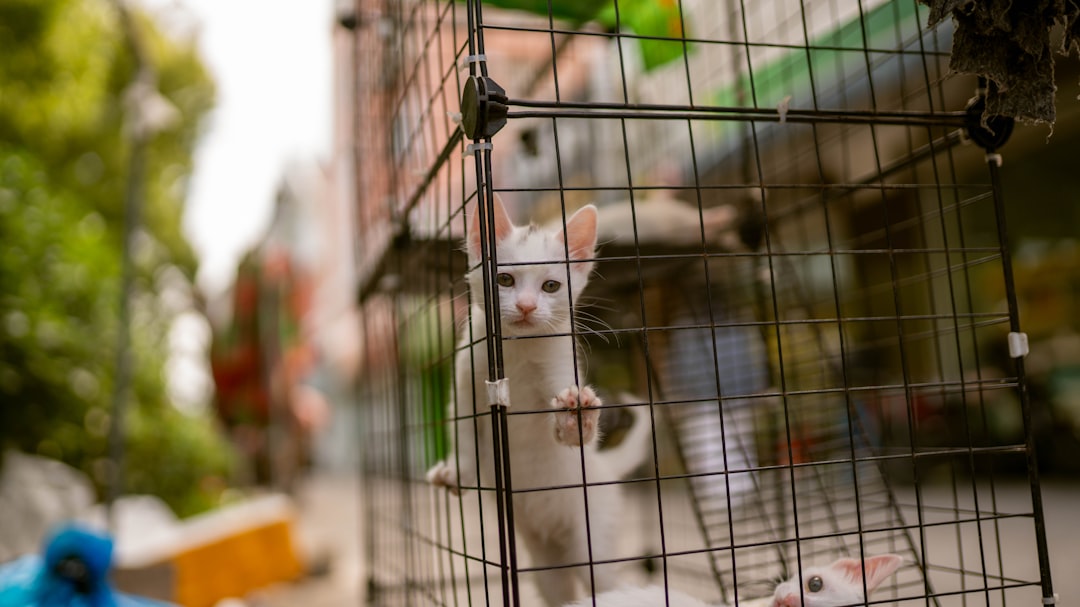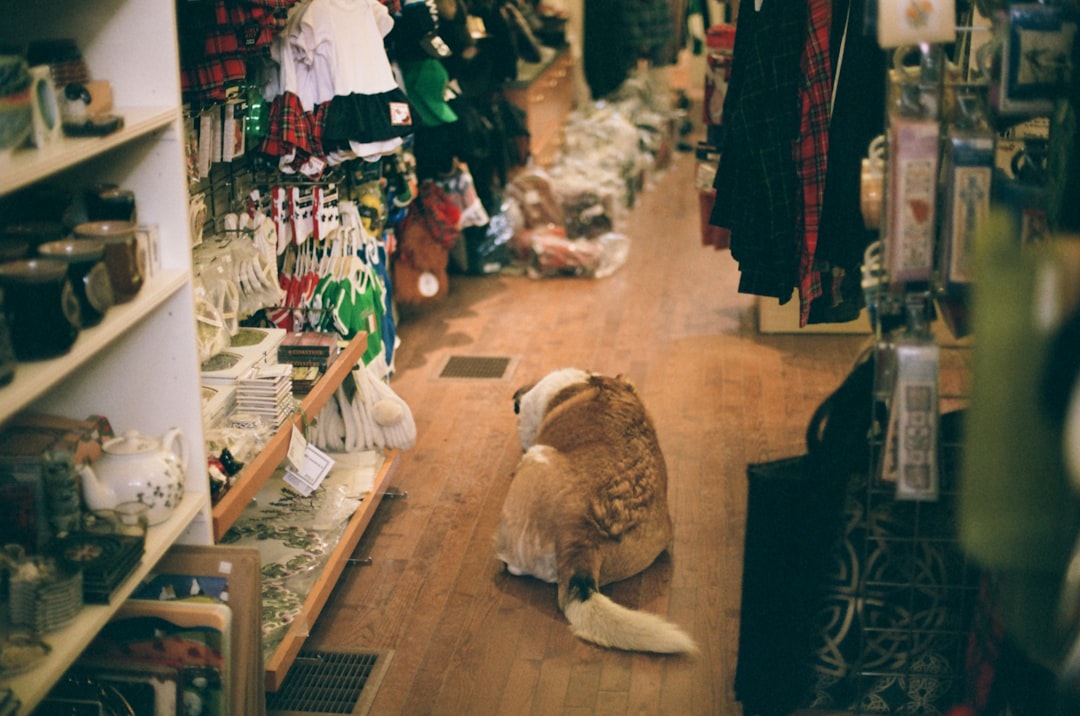

Engage prospects with a scan and streamline customer engagement with FREE QR code marketing tools by Sona – no strings attached!
Create a Free QR CodeFree consultation

No commitment

Engage prospects with a scan and streamline customer engagement with FREE QR code marketing tools by Sona – no strings attached!
Create a Free QR CodeFree consultation

No commitment
Pet supply stores face increasing pressure to provide effortless customer experiences while maximizing sales and operational efficiency in a rapidly evolving marketplace. Traditional appointment booking methods, such as paper sign-up sheets or phone calls, often create unnecessary friction for both store teams and pet owners seeking services like grooming, training, or veterinary storefront marketing. These outdated processes can lead to incomplete records, missed follow-ups, and the risk of high-value customers slipping through the cracks.
In the era of digital transformation, QR codes offer pet supply retailers a direct path to modernize these analog processes and create instant, engaging bridges between in-store touchpoints and online appointment scheduling. Without the need for cumbersome downloads or manual coordination, QR codes help stores capture valuable intent signals that might otherwise go untracked, as outlined in Sona’s guide to intent data, enabling retailers to convert fleeting interest into action.
By leveraging QR codes for appointment booking, pet supply stores can streamline customer intake, drive repeat visits, and deliver measurable improvements in engagement and operational productivity. This guide explores strategies and insights to help pet retail leaders integrate, optimize, and measure QR code-driven appointment solutions for maximum impact while directly addressing common pain points that can stall traditional approaches.

QR codes bridge the gap between physical touchpoints and digital outcomes, making it easier for pet supply stores to deliver frictionless appointment booking and improved customer satisfaction. A recurring challenge in these environments occurs when appointment requests, especially those from high-value or repeat customers, are not tracked, leading to missed opportunities. Manual schedules often leave staff scrambling, with prospective bookings lost to incomplete forms or forgotten callbacks.
Moving to QR-enabled flows converts interest into action in the moment. Instead of handing out printed brochures or asking customers to call later, a simple scan can open a mobile-friendly booking form that captures the essentials, reserves a time slot, and confirms by SMS or email. The entire process takes less than a minute, which is ideal in busy aisles or checkout lines.
Replacing printed appointment cards or manual scheduling with QR-enabled digital booking reduces staff workload and ensures every customer interaction is captured cleanly in your systems. With a platform like Sona QR’s product overview, teams can automate code creation, apply dynamic destinations, segment audiences, and integrate with CRM tools, keeping high-intent prospects visible from scan to schedule. Sona QR is built to support every step of this transformation.

Pet supply environments are filled with conversion moments that often pass without action. Customers browse grooming products, ask about training classes, or glance at an in-store vet kiosk, then leave with a verbal reminder to book. Traditional methods like paper lists, phone calls, or static brochures force a delayed response that frequently gets deprioritized. QR codes make action immediate, bridging the offline-to-online gap that otherwise stalls bookings.
Speed and simplicity are critical in this vertical. Pet owners should not have to download an app or search a website while juggling leashes, carts, and products. A single scan opens the right form or calendar, pre-populates known details, and confirms the booking. Dynamic QR codes safeguard against outdated information by letting teams update destinations as schedules, staff availability, or promotions change without reprinting signage or flyers.
As stores deploy QR codes across floor decals, event signage, and bag stuffers, they shorten booking windows, reduce no-shows through automated reminders, and maintain cleaner data for CRM segmentation. The result is a more responsive operation and a clearer view of what marketing efforts deserve ongoing investment.
Pet supply stores should focus on formats that convert shopper intent into immediate service actions. The most useful options align with appointment booking, customer support, and staff contact.
Static codes are adequate for evergreen assets, such as a general contact card. Dynamic codes should be the default for appointment booking, event registration, and promotional campaigns. They provide editability, source tracking, and analytics that support ongoing optimization and seasonality-driven changes.

Growth hides in plain sight across pet supply stores. High-traffic fixtures and moments of consideration are ideal for QR placement, since shoppers are already thinking about pet care and are open to booking as part of their visit. The key is to align code placement with the physical environment and the specific intent that tends to arise there.
Match QR codes to the stage of the journey you are targeting. For discovery moments like window browsing, emphasize easy entry points. For in-aisle consideration, highlight service benefits tied to the products in hand. At checkout, promote quick scheduling and loyalty-linked perks to convert immediately.
By aligning QR placements to typical moments of intent, retailers transform incidental interest into measurable appointments. Even modest adoption drives steady incremental bookings that compound week after week.
QR codes are at their best when they make a single, valuable action effortless. In pet supply, that usually means facilitating a booking, capturing structured interest, or offering follow-up support that leads to a deeper relationship.
As you deploy these use cases, define success metrics such as scan-to-book conversion rate, average time to book from scan, and repeat-visit rate within 60 or 90 days. Track them consistently to prove impact and direct investment toward the highest-return placements.
Each scan is a rich signal: it reveals intent, context, and often product affinity. By deploying distinct QR codes across touchpoints, pet supply retailers can auto-segment audiences and personalize follow-ups based on real behavior. Segments can reflect species focus, service type, and urgency level, leading to more relevant messages and higher booking rates. See Sona’s Playbook on Intent-Driven Retargeting.
Integrate scan data with your CRM and ad platforms to orchestrate timely outreach. A grooming-interest segment might receive limited-time bath and brush bundles. Training-intent shoppers could get a new-class announcement. Vet consult scanners might get reminders for preventive care or refill prompts tied to purchase history. Sona QR makes this orchestration straightforward by tagging and syncing scans automatically.
This approach stops guesswork and replaces it with behavior-based segmentation. Over time, your audience quality improves, engagement rises, and cost per booking falls.
QR codes serve as the connective tissue between your physical footprint and digital ecosystem. They give every print piece, social post, and in-store display a job to do, then tell you how well it was done. For strategy, read Sona’s guide to offline attribution.
Pet supply retailers already rely on a mix of in-store signage, local events, packaging inserts, and digital channels, as covered in Sona QR’s retail industry guide. Layer QR codes onto these assets to measure engagement and tie every touchpoint to a booking or form submission. With Sona QR, you can track performance across channels and sync scan data in real time.
Centralized QR management ensures consistent branding, easy A/B testing, and clean data flows into your CRM and analytics stack. It turns scattered engagements into a coherent, measurable funnel.
A well-executed QR campaign aligns business goals with customer context and technology. Use the following steps to plan, deploy, and optimize programs that convert in-store interest into appointments at scale. Each step includes practical considerations for pet supply environments.
Start by defining the problem you want to solve and the outcome you need to achieve. For many pet supply stores, the primary objective is to increase grooming or training appointments without adding staff burden or complexity.
Identify the single action you want from each placement and build backward from there. For example, at the grooming counter your use case could be Scan to book next-available slot. In service aisles, it might be Scan to request a grooming consult for your breed. This focus keeps creative assets simple and conversion-focused.
Select the code type that fits your goals and operational realities. Static codes are fixed and best for evergreen information. Dynamic codes are editable, trackable, and support attribution, which makes them ideal for appointment booking and events.
Dynamic codes are recommended for most store campaigns since they allow updates to schedules, promotions, and forms without reprinting materials. They also unlock analytics that show which placements and offers are working.
Design affects scan rate and conversion. Use a clear visual frame, brand colors, and an explicit CTA that sets expectations. Keep nearby text short and benefit-driven. Pair the code with a scannable short URL for edge cases where device cameras are restricted.
Test across devices and conditions before deployment. Check distance, glare, printer paper types, and angles. Validate that the landing page is lightweight, mobile-first, and supports fast form submission.
Meet customers where they are most likely to convert. Combine high-traffic placements with context-aware messaging. For instance, a code near nail trimmers should lead to a nail trim booking page, while a code on a training treats display can lead to a puppy class signup.
Ensure staff are trained to point out codes during relevant conversations. Provide a simple script and a small prompt card at registers and service desks to encourage scanning.
Measurement turns QR codes into a growth engine. Monitor scan volume, conversion rates, and downstream outcomes such as revenue per appointment. Segment results by store, placement, time of day, and device type to identify patterns.
Iterate on creative and placement based on data. Test different CTAs, colors, or landing page copy. With Sona QR, you can A/B test code frames and destinations while the campaign is live, then push winners to all locations.

Appointment booking progress stalls when stores cannot connect physical engagement to business results. Without visibility into which assets convert and which audiences are responding, budgets bloat and easy wins get missed. A modern analytics approach turns every scan into an insight and every insight into action.
With a platform like Sona QR, scan data flows into dashboards and your CRM, allowing marketers and managers to see the full journey from QR scan to appointment and beyond. This enables multi-touch attribution across window signage, emails, ads, and in-store displays, then connects those touches to pipeline and revenue in Sona.com. For a framework, see Sona’s blog on attribution models.
This level of visibility allows you to optimize spend, protect staff time by automating routine follow-ups, and keep campaigns honest. You will know which codes deserve more real estate and which need a rework.
Scaling success requires attention to attribution, automation, and staff enablement. The aim is not just to get scans, but to convert them into booked services and ongoing loyalty.
Prioritize clarity for customers and convenience for teams. When shoppers know exactly what they get for scanning and staff can explain it in seconds, scan rates and conversion rates rise in tandem.
By reinforcing these practices, stores build a predictable pipeline of appointments while gaining the data needed to improve each campaign iteration.

Practical examples show how QR codes unlock measurable results in busy pet retail environments. From grooming utilization to event attendance, the ability to capture interest in the moment and automate follow-up is the difference between a nice idea and consistent revenue.
Use the inspiration below to shape pilots and inform multi-store rollouts. Start with a few high-traffic placements, collect baseline metrics, then refine based on data and feedback.
These examples illustrate how QR codes unify physical and digital engagement, surface actionable data, and fuel repeatable campaigns across locations.
Expert insights highlight two consistent drivers of ROI: friction reduction and relentless optimization. Pet supply stores succeed when they remove obstacles to booking and treat every QR placement as a measurable asset that can be improved.
Common pitfalls include overcrowded displays with multiple codes competing for attention, tiny or low-contrast codes that do not scan reliably, and landing pages that are slow, long, or not mobile-first. Avoid these issues and lean into clarity and speed.
QR codes have quickly become an essential strategy for pet supply stores aiming to deliver efficient, engaging, and measurable appointment booking experiences. As every scan produces a tangible record of customer interest, retailers can finally address long-standing challenges such as tracking high-value prospects across physical and digital touchpoints, surfacing engagement signals that often go ignored, and ensuring campaign ROI is not lost to incomplete data or abandoned forms.
By transforming every physical asset into a digital access point, pet supply stores improve appointment rates, recapture opportunities that previously went unpursued, and foster more meaningful customer relationships. A data-informed approach anchored by a robust QR code management platform enables store teams to capture demand at its source and evolve retail operations for sustained, measurable growth. With Sona QR and Sona.com, you can Start creating QR codes for free, sync data automatically, and attribute bookings and revenue with confidence.
QR codes have transformed pet supply stores from simple retail spaces into seamless appointment booking hubs that enhance customer convenience and operational efficiency. Whether it’s attracting new pet owners, streamlining booking processes, or delivering a personalized shopping experience, QR codes eliminate friction and open a direct line to your customers—all while capturing actionable data to optimize your service offerings.
Imagine customers effortlessly scheduling grooming or training sessions right from their smartphones, reducing wait times and increasing satisfaction. With Sona QR, you can create dynamic, trackable QR codes in seconds, update booking links instantly without reprinting, and monitor every scan to understand customer behavior and drive revenue growth. No missed appointments, no lost leads—just smarter, more profitable pet care services.
Start for free with Sona QR today and transform every scan into a scheduled appointment, loyal customer, or valuable sale.
Pet supply stores can use QR codes to enable instant mobile-friendly appointment booking, reduce manual scheduling friction, provide easy access to service menus and event registrations, and offer post-purchase support, all of which streamline interactions and enhance customer convenience.
Implementing QR codes helps pet supply stores increase appointment booking rates, reduce no-shows, capture valuable customer intent data, improve operational efficiency, enable real-time campaign tracking, and create measurable ROI from marketing efforts.
QR codes drive sales by converting shoppers' intent into immediate bookings for grooming, training, or vet services, promoting event registrations, enabling targeted follow-ups through CRM integration, and supporting cross-sell opportunities via post-purchase offers and personalized campaigns.
Creative uses include placing QR codes on grooming signage, product aisles, event flyers, packaging inserts, loyalty cards, window displays, and even grooming bandanas to facilitate bookings, registrations, feedback collection, and targeted promotions that align with customer intent.
Stores can track performance by using dynamic QR codes that provide analytics on scan volume, source location, device type, conversion rates, and downstream revenue, integrating scan data with CRM and ad platforms for attribution, and conducting A/B testing to optimize placements and messaging.
Use Sona QR's trackable codes to improve customer acquisition and engagement today.
Create Your FREE Trackable QR Code in SecondsJoin results-focused teams combining Sona Platform automation with advanced Google Ads strategies to scale lead generation

Connect your existing CRM

Free Account Enrichment

No setup fees
No commitment required

Free consultation

Get a custom Google Ads roadmap for your business






Launch campaigns that generate qualified leads in 30 days or less.
